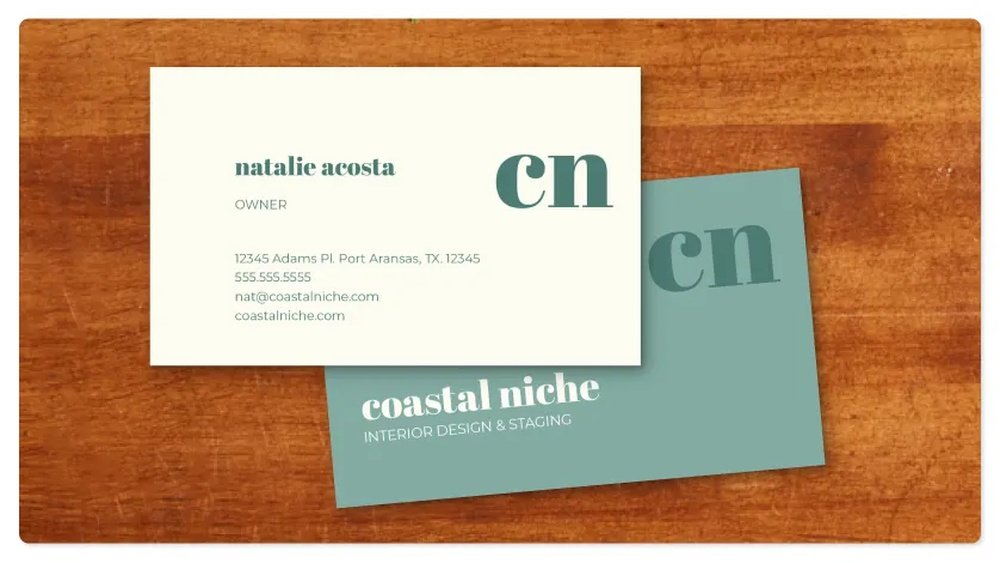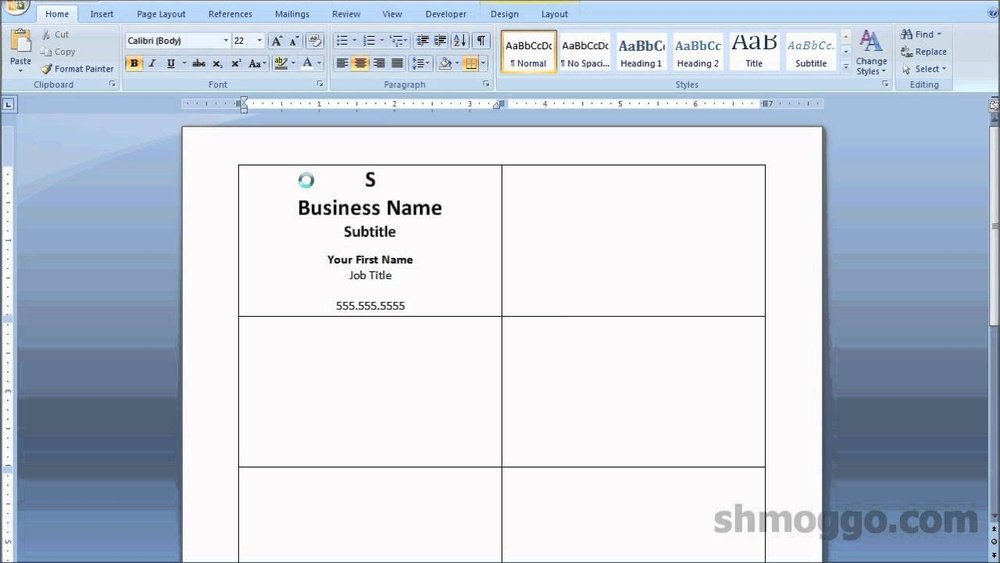Your business card is more than just a piece of paper—it’s your first impression in the palm of someone’s hand. If you want to stand out, your card needs to look sharp, feel right, and speak clearly about who you are.
But with so many options out there, how do you choose the best way to print your cards? You’ll discover simple yet powerful business card printing recommendations that will make your cards unforgettable. Keep reading, and you’ll learn how to create a card that truly works for you.

Credit: www.youtube.com
Choosing Paper Types
Choosing the right paper type is key for great business cards. Paper affects how your card feels and looks. It also changes how others see your brand. Picking the best paper helps your card stand out and last longer.
Matte Vs Glossy Finish
Matte paper has a smooth, non-shiny look. It feels soft and does not reflect light. This finish makes text easy to read. Glossy paper shines and looks bright. It makes colors pop and images clear. Glossy cards can show fingerprints more than matte.
Thickness And Durability
Thicker paper feels stronger and more professional. Thin paper may bend or tear easily. Standard thickness ranges from 14pt to 16pt. Choose thicker stock for a sturdy, lasting card. Durability matters if you want your card to hold up.
Eco-friendly Options
Eco-friendly paper uses recycled materials or sustainable sources. This choice helps reduce waste and save trees. Many papers have certifications like FSC or recycled content. Using green paper shows care for the planet and your community.

Credit: www.printwatkins.com
Design Tips
Design plays a big role in making business cards stand out. Good design helps share your message clearly. It also makes your card memorable. Focus on simple, clean layouts. Avoid clutter to keep the card easy to read.
Effective Use Of Space
Space on a business card is limited. Use it wisely to highlight key details. Leave some empty space for a clean look. Crowded cards can confuse readers. Balance text and blank areas well. This helps important information catch attention quickly.
Font Selection
Choose fonts that are easy to read. Avoid fancy or script fonts that are hard to see. Use one or two font styles maximum. Keep font size between 8 and 12 points. Make sure text is clear even in small sizes. Consistent font use builds a professional look.
Incorporating Brand Colors
Use your brand colors on the card. Colors help customers recognize your business. Stick to two or three colors for harmony. Bright colors can attract attention but use them carefully. Make sure text contrasts well with the background. This keeps your card readable and attractive.
Printing Techniques
Choosing the right printing technique impacts the look and feel of your business cards. It affects color quality, texture, and cost. Understanding different methods helps you pick the best option for your needs.
Digital Printing Benefits
Digital printing is fast and cost-effective for small orders. It uses a digital file to print directly on paper. Colors appear bright and sharp on digital prints. It allows easy customization with no extra setup costs. Ideal for quick projects and frequent updates.
Offset Printing Advantages
Offset printing uses plates to transfer ink onto paper. It offers high-quality color and detail for large runs. The cost per card decreases with bigger orders. It works well for thick paper and special finishes. Best choice for consistent, professional results.
Special Effects And Embellishments
Special effects add a unique touch to your cards. Options include foil stamping, embossing, and spot UV coating. These enhance texture and visual appeal. They help your card stand out in a stack. Perfect for brands wanting a strong impression.
Size And Shape Choices
Choosing the right size and shape for business cards matters a lot. It affects how your card feels and stands out. Different shapes and sizes suit different needs. Some keep it simple and classic. Others catch attention with unique designs. Knowing your options helps you pick the best style.
Standard Dimensions
Most business cards follow a standard size. The common size is 3.5 inches by 2 inches. This fits well in wallets and cardholders. It feels familiar and professional. Many people expect this size. It also works well with most printers. Standard cards are easy to carry and store.
Creative Custom Shapes
Custom shapes make your card unique. Rounded corners, squares, or circles are popular choices. Some cards have die-cut shapes like logos or symbols. These shapes grab attention quickly. They show creativity and style. Custom shapes can reflect your brand’s personality. But they may cost more to print and handle.
Practicality Considerations
Think about how people will use your card. Cards must fit in wallets or business card holders. Large or thick cards might be hard to carry. Odd shapes might not fit standard holders. Keep the card easy to store and share. Practical cards get kept longer and seen more.
Cost Factors
Cost plays a big role in choosing the right business card printing service. Many factors affect the price. Understanding these helps you find the best deal without losing quality.
Bulk Ordering Savings
Ordering business cards in large amounts lowers the price per card. Printers often give discounts for big orders. This saves money if you need many cards. Keep in mind, very small orders usually cost more per unit.
Budget-friendly Options
Simple designs and basic materials cut printing costs. Standard sizes and fewer colors are cheaper. Avoid extra finishes like gloss or embossing to save money. These options fit well for businesses with tight budgets.
Balancing Quality And Price
Good business cards show professionalism. Choose a balance between cost and quality. Cheaper cards might feel flimsy or look plain. Spending a little more can improve paper thickness and print clarity. This helps make a strong first impression.
Selecting A Printer
Selecting the right printer is key to getting quality business cards. The printer affects the look, feel, and durability of your cards. Choosing wisely helps avoid mistakes and saves money. Consider your needs and options carefully before making a choice.
Local Vs Online Services
Local printers offer quick service and easy communication. You can see paper samples and proof your design in person. Online services often provide lower prices and more design options. They deliver cards to your door, saving time. Decide what matters more: speed, cost, or hands-on service.
Checking Reviews And Samples
Read customer reviews to learn about print quality and service. Look for comments on color accuracy and card thickness. Ask the printer for samples to see their work firsthand. Samples show paper texture and print sharpness. This step helps avoid surprises and ensures satisfaction.
Customer Support Importance
Good customer support solves problems fast. It helps with design questions and printing issues. Choose a printer with friendly, helpful staff. Quick responses reduce stress and keep your project on track. Support matters, especially if you need advice or changes.
Adding Qr Codes And Contact Info
Adding QR codes and clear contact information makes business cards more useful. These elements help people connect with you quickly. A good business card should provide easy access to your details and digital links. This section explains why QR codes are helpful and what contact info to include. It also covers how to keep the card easy to read.
Benefits Of Qr Codes
QR codes let people save your info fast. Scanning a code can open a website or save a contact. This saves time and reduces errors in typing. QR codes can link to your portfolio, social media, or maps. They make your card more interactive and modern. Many smartphones can scan codes without extra apps.
Essential Contact Details
Your card should show key details clearly. Include your full name and job title. Add a phone number where you can answer calls. Provide an email address for messages. A company website link helps people learn more. Only share details you want others to use. Keep the info updated and correct.
Maintaining Readability
Choose a clean font that is easy to read. Avoid using too many colors or small text. Leave enough space around text and QR codes. Make the QR code large enough to scan easily. Avoid cluttering the card with too much information. A clear design helps people find details fast.

Credit: www.nytimes.com
Frequently Asked Questions
What Is The Best Paper Quality For Business Cards?
The best paper quality for business cards is typically 300-350 gsm. It offers durability and a professional feel. Matte or glossy finishes enhance the card’s look. High-quality paper ensures your card stands out and lasts longer.
How To Choose The Right Size For Business Cards?
Standard business cards measure 3. 5 x 2 inches. Choose this size for easy storage and professional appearance. Custom sizes can work but may not fit wallets or cardholders. Consider your brand style and usability when selecting size.
What Printing Techniques Improve Business Card Appearance?
Popular printing techniques include digital, offset, and letterpress. Digital is cost-effective for small runs. Offset offers high-quality, consistent colors for large orders. Letterpress adds texture and elegance. Choose a method that suits your budget and design needs.
Should I Use Single Or Double-sided Printing?
Double-sided printing maximizes space for information and branding. It allows for contact details on one side and logo or tagline on the other. Single-sided is cheaper but less informative. For impact, double-sided printing is usually recommended.
Conclusion
Choosing the right business card design helps you make a strong first impression. Keep your card simple, clear, and easy to read. Use good quality paper to show professionalism. Include only important contact details to avoid clutter. A well-made card can open doors to new opportunities.
Remember, your business card represents you and your brand. Small details make a big difference in how others see you. Take time to pick colors and fonts that match your style. A good card can help people remember you better.
Keep these tips in mind for effective business card printing.



